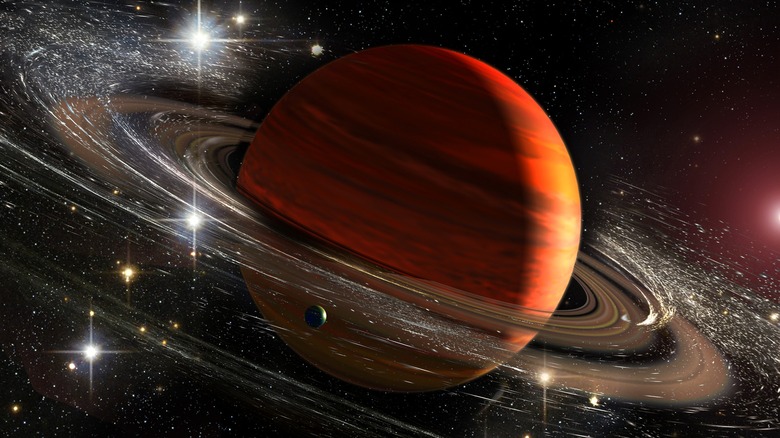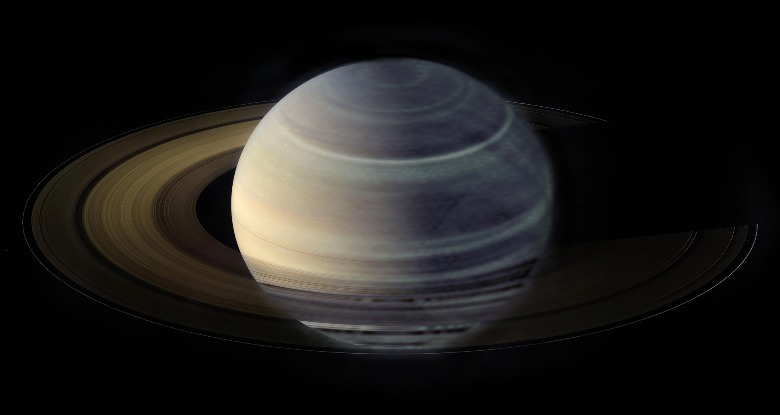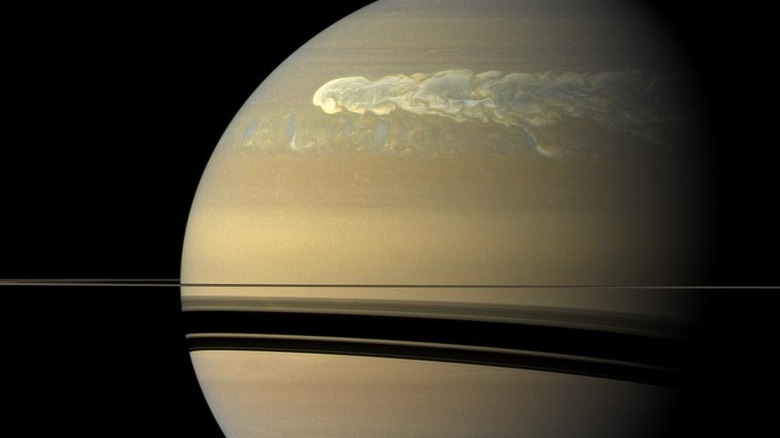The Science Behind Saturn's Storms That Last Over 100 Years
If you think the weather is bad where you live, then take heart. At least you aren't on Saturn, where storms can rage for 100 years. Though the solar system's most famous storm is the Great Red Spot on Jupiter, a storm so big and so fierce that it can be seen from Earth, Saturn also has its share of dramatic storms — and recent research reveals how these storms can be sustained for so long. A recent study in the journal "Science Advances" describes how astronomers observed Saturn using ground-based telescopes like the Very Large Array (VLA) to understand the planet's atmosphere. The VLA is a group of smaller dishes that all work together to act like one large telescope, and which look in the radio wavelength to see features in the atmosphere.
While researchers knew that enormous storms occurred every few decades on Saturn, they weren't sure what caused them. The recent research helps them see into the atmosphere, observing patches of ammonia found alongside hydrogen, helium, water, and methane. Ammonia blocks radio waves, so it can clearly be seen in radio images like those taken by the VLA. "Understanding the mechanisms of the largest storms in the solar system puts the theory of hurricanes into a broader cosmic context, challenging our current knowledge and pushing the boundaries of terrestrial meteorology," said lead author Cheng Li of the University of Michigan in a press release for Berkeley.
Looking with radio
The researchers were able to see the concentration of ammonia in different layers of Saturn's atmosphere. There was only a little ammonia in the mid layers, but a greater quantity was found closer to the planet, suggesting that there is a system moving the ammonia around through the layers. "Radio observations help characterize dynamical, physical and chemical processes including heat transport, cloud formation and convection in the atmospheres of giant planets on both global and local scales," explained co-author Imke de Pater of UC Berkeley
The researchers found that the ammonia levels were related to mega-storms in the planet's past. It is thought that ammonia could be moving through the atmosphere due to evaporation and precipitation, comparable to the way water is evaporated into clouds before raining down on the Earth.
They found that these storms can have effects that last for many years as well. They didn't only see evidence of recent storms, like one from 2010, but also of older storms up to hundreds of years old, which left detectable signatures in the atmosphere. One more surprising finding was that, even though they are both gas giant planets, Saturn's atmosphere isn't like Jupiter's. While both planets are made primarily of hydrogen, the dynamics in their atmospheres are quite different — showing that we have a lot more to learn about these big, beautiful planets.


